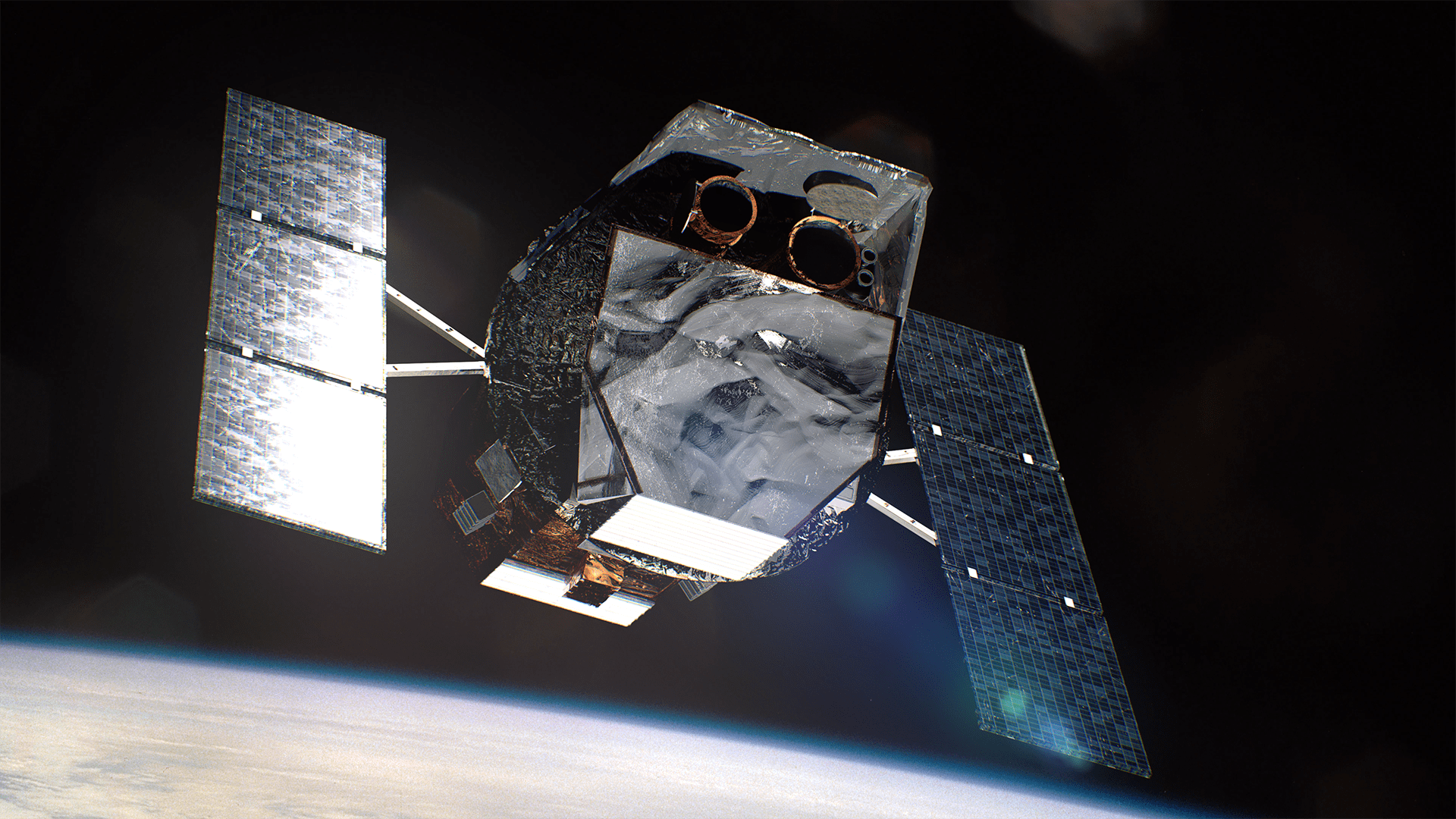
To drive the development of key space-based capabilities for the United States, NASA is exploring an opportunity to demonstrate technology to raise a spacecraft's orbit to a higher altitude. Two American companies - Cambrian Works of Reston, Virginia, and Katalyst Space Technologies of Flagstaff, Arizona - will develop concept design studies for a possible orbit boost for the agency's Neil Gehrels Swift Observatory.
Since its launch in 2004, NASA's Swift mission has led the agency's fleet of space telescopes in investigating changes in the high-energy universe. The spacecraft's low Earth orbit has been decaying gradually, which happens to most satellites over time. Because of recent increases in the Sun's activity, however, Swift is experiencing additional atmospheric drag, speeding up its orbital decay. This lowering orbit presents an opportunity for NASA to advance a U.S. industry capability, while potentially extending the science lifetime of the Swift mission. The concept studies will help determine whether extending Swift's critical scientific capabilities would be more cost-effective than replacing those capabilities with a new observatory.
"NASA Science is committed to leveraging commercial technologies to find innovative, cost-effective ways to open new capabilities for the future of the American space sector," said Nicky Fox, associate administrator, Science Mission Directorate, NASA Headquarters in Washington. "To maintain Swift's role in our portfolio, NASA Science is uniquely positioned to conduct a rare in-space technology demonstration to raise the satellite's orbit and solidify American leadership in spacecraft servicing."
The concept studies are being developed under Phase III awards through NASA's Small Business Innovation Research (SBIR) Program, managed by the agency's Space Technology Mission Directorate, to American small businesses from a pool of existing participants. This approach allows NASA to rapidly explore affordable possibilities to boost Swift on a shorter development timeline than would otherwise be possible, given the rapid rate at which Swift's orbit is decaying.
At this time NASA does not have plans for an orbit boost mission and could still allow the spacecraft to reenter Earth's atmosphere, as many satellites do at the end of their lifetimes. NASA is studying a potential Swift boost to support innovation in the American space industry, while gaining a better understanding of the available options, the technical feasibility, and the risks involved.
NASA will also work with Starfish Space of Seattle, Washington, to analyze the potential of performing a Swift boost using an asset under development on an existing Phase III SBIR award. Starfish is currently developing the Small Spacecraft Propulsion and Inspection Capability (SSPICY) demonstration for NASA, with the primary objective of inspecting multiple U.S.-owned defunct satellites in low Earth orbit.
"Our SBIR portfolio exists for circumstances like this - where investments in America's space industry provide NASA and our partners an opportunity to develop mutually beneficial capabilities," said Clayton Turner, associate administrator, Space Technology Mission Directorate, NASA Headquarters. "Whether we choose to implement the technologies in this circumstance, understanding how to boost a spacecraft's orbit could prove valuable for future applications."
Swift was designed to observe gamma-ray bursts, the universe's most powerful explosions, and provide information for other NASA and partner telescopes to follow up on these events. Its fast and flexible observations have been instrumental in advancing how scientists study transient events to understand how the universe works. For more than two decades, Swift has led NASA's missions in providing new insights on these events, together broadening our understanding of everything from exploding stars, stellar flares, and eruptions in active galaxies, to comets and asteroids in our own solar system and high-energy lightning events on Earth.

"Over its extremely productive lifetime, Swift has been a key player in NASA's network of space telescopes - directing our fleet to ensure we keep a watchful eye on changes in the universe, both far off and close to home," said Shawn Domagal-Goldman, acting director, Astrophysics Division, NASA Headquarters. "Now, this long-lived science mission is presenting us with a new opportunity: partnering with U.S. industry to rapidly explore efficient, state-of-the-art solutions that could extend Swift's transformative work and advance private spacecraft servicing."
Cambrian and Katalyst have each been awarded $150,000 under Phase III SBIR contracts for concept design studies. The NASA SBIR program is part of America's Seed Fund, the nation's largest source of early-stage, non-dilutive funding for innovative technologies. Through this program, entrepreneurs, startups, and small businesses with less than 500 employees can receive funding and non-monetary support to build, mature, and commercialize their technologies, advancing NASA missions and helping solve important problems facing our country.






